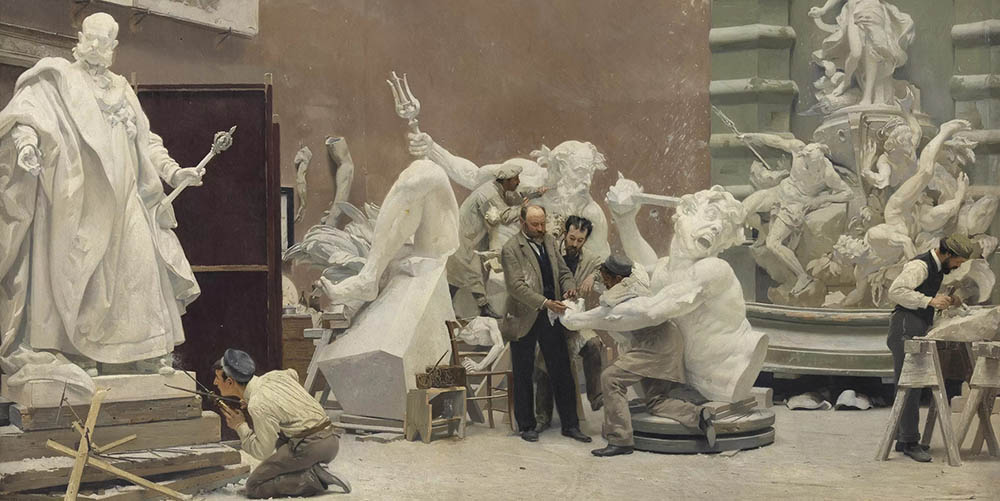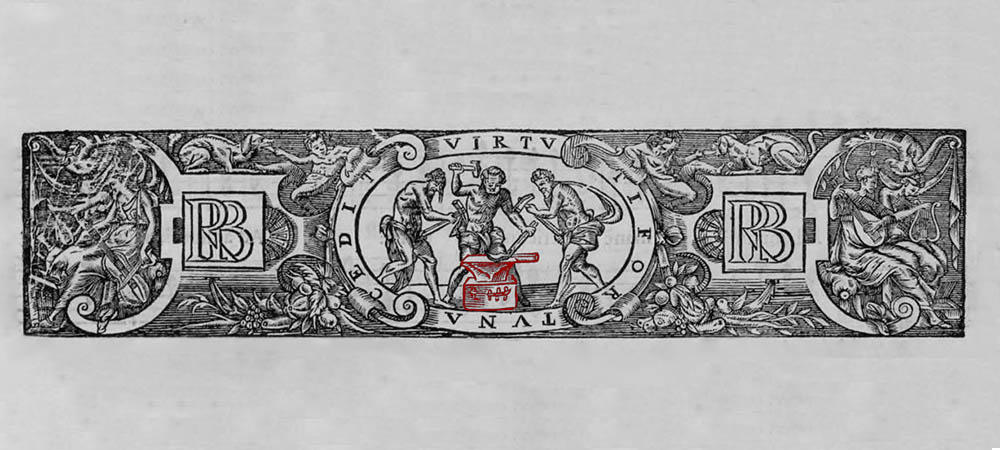The Freedom of the Artist
In the last two posts, we explored two ways of thinking about freedom that I have argued are ultimately inadequate. In the first post, I discussed the freedom-as-selection model found in Plato’s Myth of Er. According to this way of thinking, our freedom consists in an act of selection from a set of objectively given predetermined options. In the second post, I discussed the freedom-as-assertion model found in Nietzsche’s Thus Spoke Zarathustra. According to this way of thinking, our freedom consists in an act of self-assertion in which both the form of life chosen and the evaluative criteria by which that life is judged proceed wholly from within the subjective depths of the hero. In this post, I will articulate a third option that I believe preserves the best intuitions in these two models while avoiding their inadequacies. This third option conceives of freedom on analogy with an artist’s act of creation.
When a sculptor works with his marble, he brings together in a profound way the polarities of interiority and exteriority, subjectivity and objectivity. The sculptor seeks to realize in the concrete a conception he has within himself, but he does not have the absolute freedom to realize just anything. He cannot create arbitrarily ex nihilo. The marble itself is a given. It lay in the earth thousands of years before the sculptor came along. It has a particular nature, a texture, and a grain, all of which the sculptor can do nothing about. He must work within the bounds determined by this antecedently given material. Some shapes that he might like to make are simply not possible given the constraints that he must work within. Nevertheless, he does not simply select from an array of logically possible marble-shapes. The shape he realizes proceeds from within his own soul. He can truly call the sculpture his own because it is an expression into the exterior world of something born of his interior depths.

What he brings out of himself, however, is not without inspiration. In cases of representative art, he looks to models outside himself. It is not as though the artist dreams up out of whole cloth what a face looks like. Even at the extreme end of hyperrealistic representational art, however, the artist must choose his perspective, must choose which natural objects to represent, and must choose what to emphasize. At the other extreme, in purely abstract art, the artist can give himself maximum liberty to produce whatever forms he likes, yet even here there remain elements that the artist does not invent, such as the very laws of geometry, the nature of color, and the myriad objective associations that lines, volumes, tones, or spatial relations have with one another. All along this spectrum between abstract and representational art, therefore, we find a constant dynamic interplay between that which proceeds from within the subjectivity of the artist and that which proceeds from the objective world outside the artist.
What is more, the process of sculpting the marble brings together the subjective and the objective poles of freedom in a still deeper way because it does not take place all at once. It is not as though the artist simply produces in a single stroke the fully realized exterior counterpart to his interior conception. Instead, he begins the process with a more or less vague notion of what he would like to realize, but as he begins to externalize this form that notion becomes more refined. He begins, perhaps with a sketch. Looking at the object he has now produced, he realizes that a certain arrangement of limbs will not be as balanced as he thought they would be. He modifies his plan, blocks in the rough result in the marble, discovers a pleasing effect that he had not quite foreseen, refines the face and thereby meets a personality possessed of greater nuance than the one he had imagined, and so on. The creation of art is a kind of extended conversation between the artist and his work. Hence, the final product emerges from a process of continual interplay between the interior freedom of the artist’s creative spirit and the feedback he receives from the objective, exterior result.
As a fiction writer, my wife talks about “getting to know” characters who are the product of her own imagination. This everyday experience of artists would be hard to understand on the freedom-as-selection and freedom-as-assertion models. On the former model, the characters should be logical possibilities that she picks to put into her story and so should be fully known. On the latter model, they should be whatever she wills them to be, and so should not be capable of any mystery or resistance to her creative effort. On the freedom-as-creation model, however, the characters are truly hers because they proceed from her own creative spirit, but they also must exist within a world of narrative plausibility and dramatic aesthetics, and once they exist, they start to take on a life of their own according to these strictures.
So far, we have discussed the interplay between subject and object in the artist’s realization of his project, but we must also discuss the dimension of normative evaluation. Is the work any good? Is it beautiful and how? Here too, we see both the subjective and the objective have a role to play. Both Plato and Nietzsche have a point. On the one hand, (despite what many contemporary artists might wish) the artist cannot simply make any shape he likes and call it beautiful. There are objectively given aesthetic values, laws of harmony, composition, and meaning, to which the work of art must conform if it is to realize them. On the other hand, the successful work of art realizes those aesthetic values in a new way, introducing a specificity of aesthetic being that did not exist before. Contrary to his famous claim, the form of Michelangelo’s Moses did not exist from eternity inside the marble, waiting to be unlocked. Out of his own creative subjectivity, Michelangelo brought into the world a genuinely new objective being, which embodies the antecedent objective values in a novel and unique particularity. Now that his sculpture has been brought out into the objective world, later artists can respond to its objective value—not just the objective value of sculptural beauty in general, but the particular beauty of this sculpture.
Considering the dynamic interplay between subjectivity and objectivity in all these dimensions in the creation of art, I propose that we think about the freedom of shaping our own lives in similar terms. Like the artist, we cannot exercise the absolute self-assertive freedom of Nietzsche’s hero. Just as the artist must work within the strictures of his physical material, so too we must work within the limits of our objectively given human nature and the objectively given world around us. Furthermore, just as the artist must work within the canons of objectively given aesthetic values, so too we must work within the limits of objective good and evil. An artist cannot simply redefine the words “straight” and “curved” and we cannot simply redefine “right” and “wrong.” Nevertheless, we should not think about the choice of our own life as a mere selection from a set of predetermined possibilities already existing out in heaven somewhere. Instead, we must think of our choice of life as a continuous process of dynamic interaction between the deep core of our free interior and objectively given reality.
In addition to the limits that come from elements already given before we were born, we must also continually work with the objective, concrete results of our prior choices. We have adopted, perhaps, a particular way of being in our youth, a particular career, particular habits, or particular moral commitments. This is our sketch. We may need to erase some lines, we may need to refine a curve here and there, or we may need to engage in a more radical revision of the whole thing. As we develop, we continue to choose who we are, and every choice continues the process by which we shape the sculpture of our lives. We can do this well or we can do this poorly. The ultimate standards of judgment are not up to us. But the particular way that we pursue good or evil is. We are therefore responsible for bringing into the world a genuinely new and unique biography that particularizes good and evil in a new and unique way.
